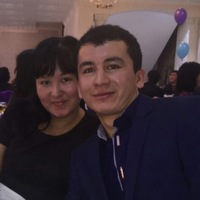
N!/(n-4)! = 22n!/(n-3)!
 0
0
 0
0
Ответы на вопрос
 Внимание! Ответы на вопросы дают живые люди. Они могут содержать ошибочную информацию, заблуждения, а также ответы могут быть сгенерированы нейросетями. Будьте внимательны. Если вы уверены, что ответ неверный, нажмите кнопку "Пожаловаться" под ответом.
Внимание! Ответы на вопросы дают живые люди. Они могут содержать ошибочную информацию, заблуждения, а также ответы могут быть сгенерированы нейросетями. Будьте внимательны. Если вы уверены, что ответ неверный, нажмите кнопку "Пожаловаться" под ответом.

n(n-1)(n-2)(n-3)(n-4)! 22n(n-1)(n-2)(n-3)!
----------------------------- = ---------------------------
(n-4)! (n-3)!
n-3=22
n=25
Ответ: 25
 0
0
 0
0

To solve the equation , we can start by simplifying both sides of the equation.
First, let's simplify the factorials:
(We didn't expand the last term to keep it in a factorial form)
Now, rewrite the equation with these simplifications:
Next, we can cancel out the common terms in the numerator and denominator on both sides:
Now, let's consider two cases:
Case 1: (This means )
If , we can cancel out from both sides of the equation:
Now, we have:
Now, we can divide both sides by (assuming ):
Now, we have a simple equation for :
However, must be a positive integer, but is not an integer. Therefore, there are no solutions in positive integers for this case.
Case 2:
If , then the equation becomes:
Simplifying further:
Since and , both sides of the equation are equal to 6. So, the solution in this case is .
Therefore, the only solution in positive integers is .
 0
0
 0
0
Похожие вопросы
Топ вопросов за вчера в категории Алгебра
Последние заданные вопросы в категории Алгебра
-
Математика
-
Литература
-
Алгебра
-
Русский язык
-
Геометрия
-
Английский язык
-
Химия
-
Физика
-
Биология
-
Другие предметы
-
История
-
Обществознание
-
Окружающий мир
-
География
-
Українська мова
-
Информатика
-
Українська література
-
Қазақ тiлi
-
Экономика
-
Музыка
-
Право
-
Беларуская мова
-
Французский язык
-
Немецкий язык
-
МХК
-
ОБЖ
-
Психология
-
Физкультура и спорт
-
Астрономия
-
Кыргыз тили
-
Оʻzbek tili

























